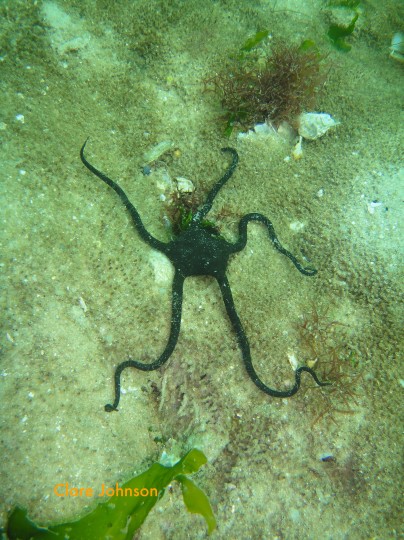
Brittle stars are echinoderms, which makes them relatives of starfish, sea urchins, sea cucumbers, feather stars and basket stars. I was never particularly enamoured of them until I started seeing striped brittle stars on some of the deeper dive sites (more on that later).
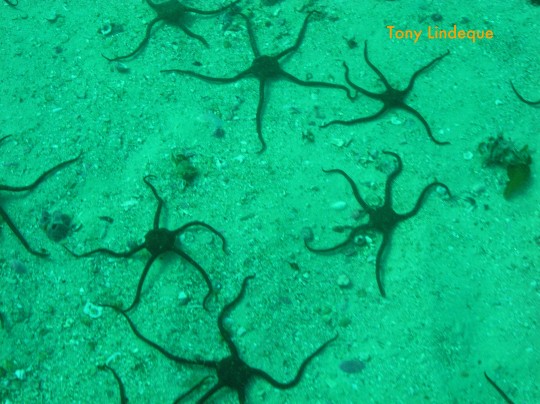
Brittle stars are mainly found in deep water, but in Cape Town we do find serpent-skinned brittle stars in the shallows (well, at over eight metres’ depth, usually), often clustered in large groups.
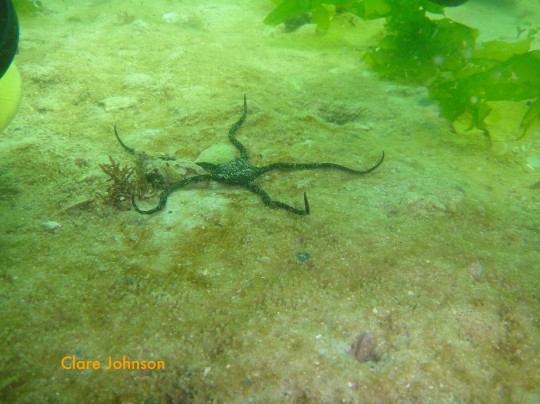
All of a brittle star’s organs are located in its central disc. They have five legs, much like whips, and are extremely agile and quite fast movers. Unlike starfish, which use tube feet for moving around, brittle stars acutally use their arms, moving each one independently.
You can see in the picture below (out of focus because he was moving so fast!) how dexterous the brittle star is at turning himself right-side up. He’s balancing on three or four of his legs as he gives himself a powerful flip.

Their mouth (same opening also serves as an anus) is located on the underside of the central disc, like starfish. They have five toothy jaw plates inside their mouths. They are scavengers, but will also eat small worms or crustaceans. In the deep ocean, they capture nutritious snacks in the form of passing organisms from the prevailing currents.
Some species (including those found in the Cape) actually give birth to live young – they brood their larvae in sacks called bursae, located between their arms.
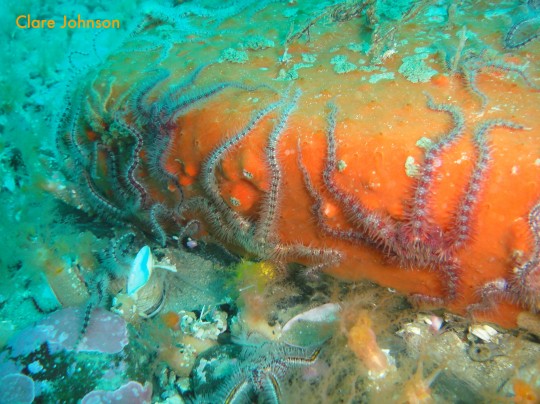
Striped brittle stars are mainly found in deeper water, and we saw a lot of them at Partridge Point and on the SS Cape Matapan. They are extremely well camouflaged against the sand, should they choose to lie on it!
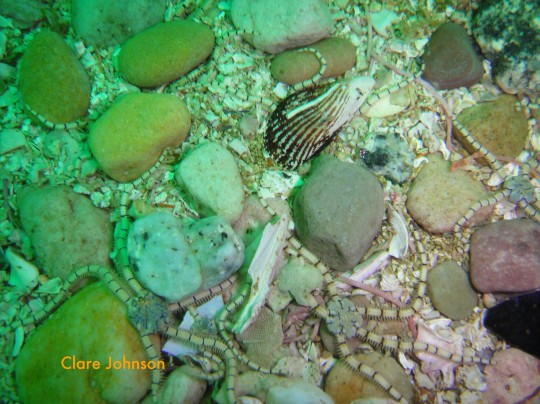
Like starfish, brittle stars can also grow missing limbs back, unless they lose all their limbs at once. Here’s one at Long Beach, with his growing leg tucked in coyly.
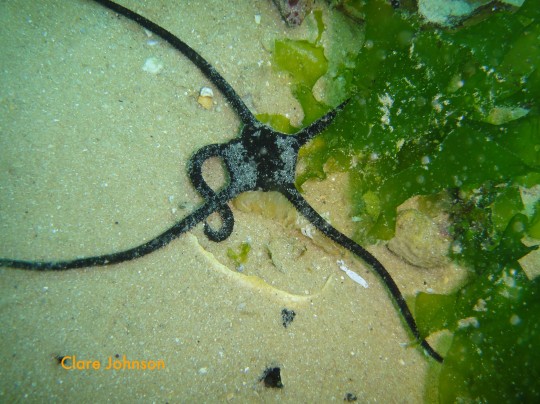








Great pictures of sea stars. I will be linking to you.